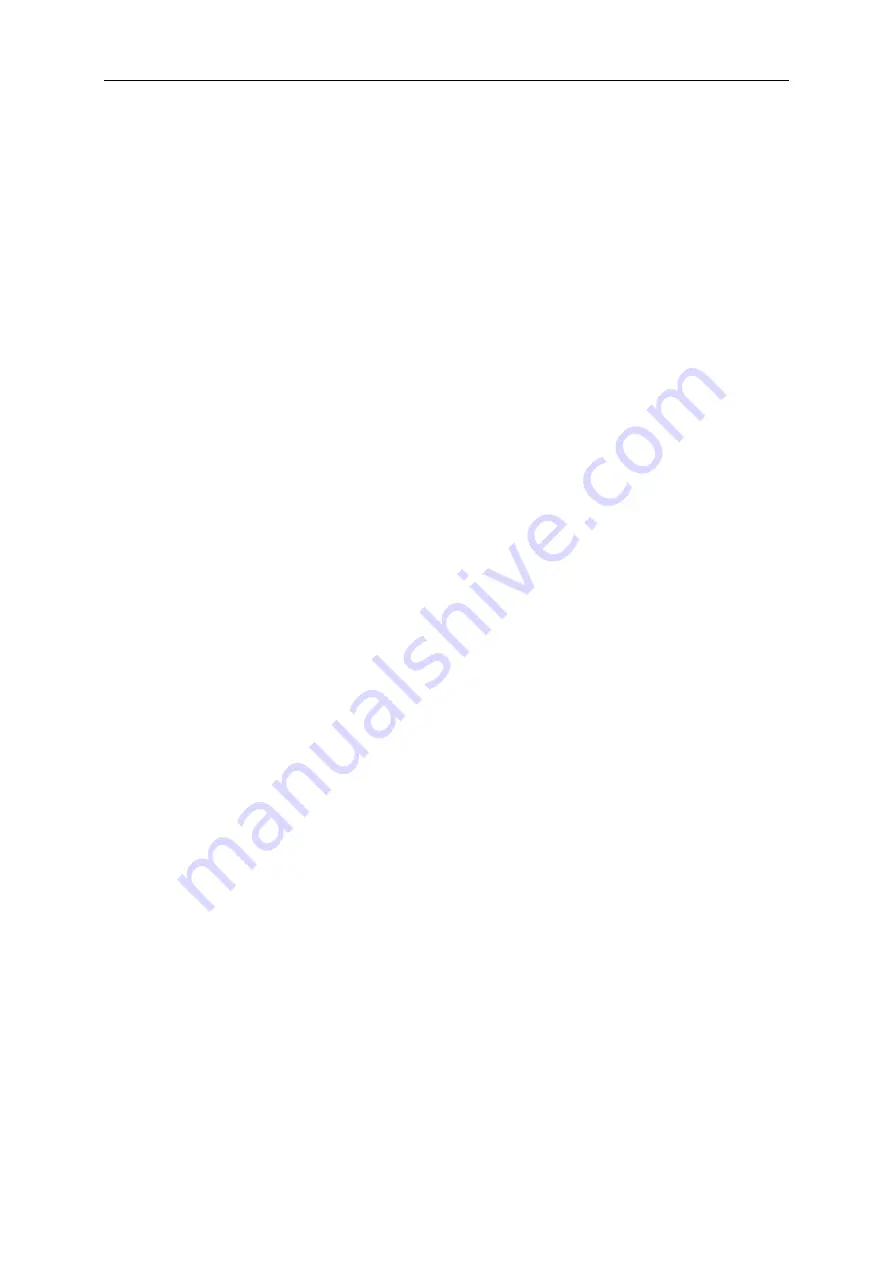
Instruction Manual for F1300/1600 Mud Pump
32
3)
Rotate pump to extreme rear of stroke and take measurement again at the same place. Compare
these measurements to the ones taken at the front of the stroke to determine if crosshead is running
horizontally.
4)
If the centerline of the extension rod is more than 0.381mm (0.015
″
) low in the diaphragm plate
bore, shims should be inserted under the lower guide to bring the extension rod back to center,
provided there is ample clearance between the top of crosshead and upper crosshead guide. It is
normal for the lower guide to wear more at the rear due to heavier loading at this point because of
the angle of the eccentric strap. It is permissible to shim the guides on a taper if is done accurately to
provide firm support for the guide.
Do not shim guides to make the clearance less than 0.50mm (0.020
″
) between upper guide and
crosshead. The large crosshead clearances are acceptable due to characteristics of triplex pump
operation; the crosshead pressure is always on the lower guide when forward-rotating.
Note: When the mud pump must run in reverse situation because of power, the crosshead
pressure is on the upper guide; now guide clearance must be controlled in 0.25~0.40mm
(0.010-0.016in).
5)
Cut shims from steel shim stock long enough to reach completely across the guides. Cut tabs on
the side to bend down over frame supports to hold them in place. Refer to items 3 and 4 under
Installation of Crosshead Guides.
3.9 Fluid End Maintenance
For many years, the fluid end of a pump was considered a non-wearing part which did not cause any
concern other than possible infrequent repairs or replacements resulting from fluid cuts or washouts.
However, the higher pressures of the present-day drilling requirements have resulted in higher
stresses being imposed on the fluid end which, when combined with the corrosive characteristics of
the drilling fluid, have resulted in the demand that more and better maintenance be given to the fluid
end parts and pieces if a reasonable operating life is to be obtained. A view of the main maintenance
is as follows:
1)
Make sure all valves on the discharge side of pump are opened before pump is put into operation.
Kicking pump in against a closed valve can often be the start of a fatigue crack. An open crack may
not necessarily occur at the precise moment, however, a small crack could occur and start the process
of “corrosion fatigue failure”
2)
Do not engage pump clutch when prime mover is running at a high rate of speed, which can
cause undesirable shock loads against both power end and fluid end.
3)
Properly maintain pressure relief valve to assure it is set for the pressure rating on the liner size
being used. Refer to the description about the relief valve.
4)
Do not operate the pump for an extended period of time if a severe fluid knock is present.
Properly prepare fluid end for storage. When pump is to be shut down or not operated for a period of
ten days or more, it is recommended that the fluid end parts such as liners, pistons, rods, etc, be
removed from the pump and the fluid end be flushed out completely with fresh water. After a
thorough flushing, apply grease or a rust preventative to all of the machined surfaces such as seal
area, liner flange threads, valve pot cover threads, cylinder cover threads, valve seats, etc. The parts
removed from the pump including liner, piston rods, etc., should of course be protected correctly. This
will not only extend the life of the fluid end through resistance to corrosion, but will also protect the
expendable parts removed from the pump and maintain them in good condition for installation in the
pump at the next start-up period.
















































